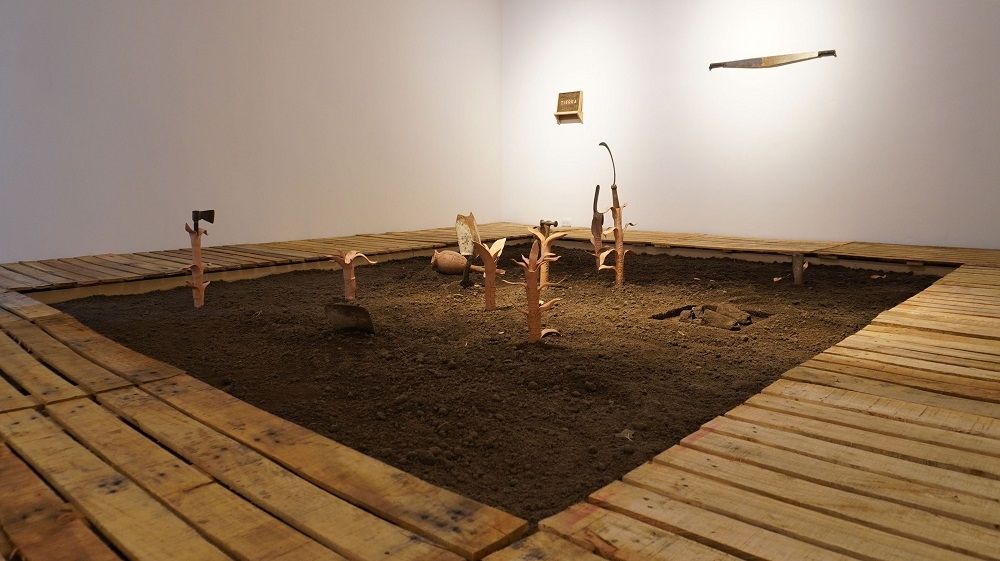
El hombre es como las plantas, 2021
Installation
There is an idea that it is necessary to examine the past in order to move towards the future. This idea is based on the fact that the events of a time past are useful to us in the sense that they allow us to see the virtues and faults of committed acts, and thus be able to cultivate those virtues and not repeat those faults.
The same thing happens with the notion of history and memory: we take history as a set of fairly feasible facts that allow us to study the past in a measured way, and memory as an amalgamation of stories and recollections, sometimes inconcrete and unfaithful, of what happened. However, it has been proven that history is not something concrete, but rather something that requires constant review so as not to fall precisely into those faults of the past.
Memory, on the contrary, is something that has allowed us to build from the collectivities. There is no memory but memories, and these are intertwined and intersect in a network that extends between territories, cultures and identities. These are created from the stories of various individuals, as if it were a forest whose trees are interconnected between the roots and the branches of the crowns. That is why memory ━or memories━ are indelible in the construction of identities; each individual a tree and each forest a society.
It is possible to say that our society is at a time that requires us to think beyond our past. This does not imply a praise to oblivion, but to think of ourselves beyond the violent history that for so long permeated our notion of collective identity. It is necessary to imagine possible futures so as not to fall back on habitual pasts.
El Hombre es como las Plantas is a work that investigates these possible notions of our collective identity. The work is located at a point between the past and the present, referring to our historical relationship with the earth. The installation alludes to a place of memory, between the archaeological, the tragic and the hopeful. The work invites us to visit a space that remembers and commemorates the defenders of the territories as a fundamental part of our collective imagination.
Ceramic plants grow alongside real plants from a pit or excavation in the ground as if they were reborn after being buried. The work seeks to place the importance of the land as a fundamental aspect of our identity and collective memory, and thus think of ourselves from other points of view beyond the past.
, Colombia